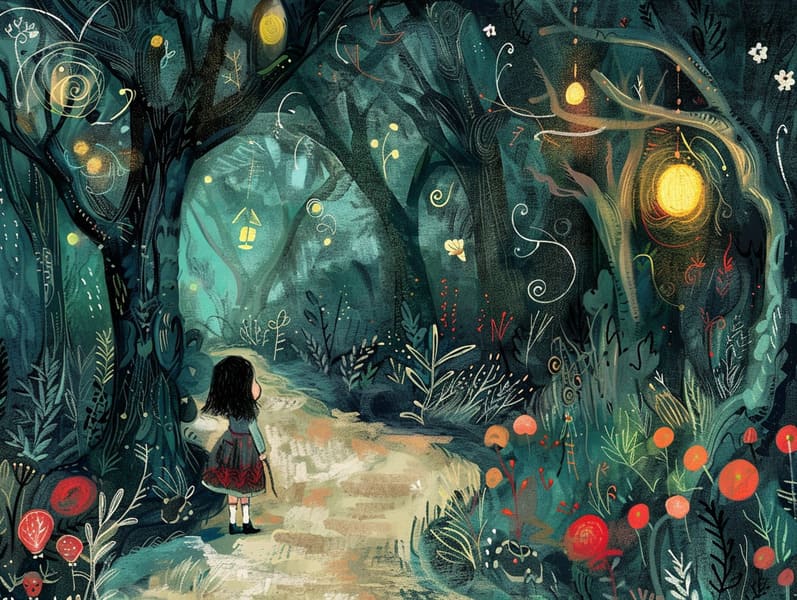The Dawn of Ancient Fairy Tales and Its Unfading Spell.
The Dawn of Ancient Fairy Tales and Its Unfading Spell.
Blog Article

Famous fairy tales have old origins. These tales have been passed down from one generation to the next long before they were ever put on paper. They came from a variety of societies, including Indigenous traditions. They were initially transmitted among mature audiences, often carrying themes and messages mirroring the societal norms and beliefs of the time.
The famous Grimm duo, Jacob and Wilhelm, were among the first to collect many of these beloved narratives. Their compilation, "Grimm's Folk Tales," included classics like "Cinder Maid," "The Story of Hansel and Gretel," and "Little Snow White," which have since become cornerstones in the world of famous fairy tales. Similarly, Hans Andersen's whimsical tales, such as "The Sea Maid," and "The Story of the Ugly Duckling," have touched hearts worldwide, securing their place in the pantheon of beloved fairy tales.
Though they are centuries old, traditional fairy tales remain as relevant as ever, especially as children's bedtime stories. These enchanting tales are now available in various formats, including artistically illustrated books, delightful animations, and digital storybooks.
Their ongoing significance can be ascribed to several whimsical characteristics:
Important Morals: Traditional fairy tales often offer important moral lessons. Stories like "The Boy Who Cried Wolf" teach the importance of honesty, while "The Race of the Tortoise and the Hare" point out the virtues of determination and unpretentiousness. These stories offer little ones clear distinctions between moral and immoral, building their moral compass in a tender yet deep way.
Empathy and Understanding: Timeless fairy tales frequently showcase characters facing trials and tribulations, urging children to understand with their struggles and applaud their triumphs. For instance, "The Story of Beauty and the Beast" teaches us the importance of seeing beyond the surface to perceive the true nature of a person, strengthening insight and awareness.
Cultural Appreciation: Many traditional fairy tales are deeply ingrained in the cultural contexts from which they were born. Learning from these stories can provide informative snapshots into different social structures, enhancing a sense of cultural insight and discernment.
Imagination and Creativity: The fanciful elements in timeless fairy tales—fairy godmothers—encourage children’s fantasies. These fairy tales move readers to mythical realms, triggering innovative thinking and a sense of curiosity that lasts a lifetime.
Old fairy tales are not only spellbinding but also pedagogical. They serve as captivating tools in building various cognitive and affective skills in children. When timeless fairy tales are voiced, they boost communication skills by offering new phrases and detailed sentence structures. This practice also strengthens hearing abilities and attention span, as young ones focus on every detail, excited to see what happens next.
Furthermore, contemplating the themes and characters of classic fairy tales can cultivate logical thinking and critical thinking. The young are led to recognize patterns, make predictions, and know cause and effect. These contemplations also boost little ones communicate their thoughts and feelings, cultivating their emotional intelligence.
In today’s digital age, the existence of digital fairy tales has made these stories more acquirable than ever. Web platforms and web apps make available wide arrays of bedtime fairy tales that can be looked at or listened on anytime, anywhere. Fairy tales told out loud are particularly popular, extending an engaging way for little ones to delight in these captivating stories. Narrated books and read-to-me stories lead characters and settings to life, often enhanced by spellbinding melodies and tunes that boost the tale experience.
The persistent attraction of old fairy tales lies in their ability to modify to modern days while preserving their essential themes. Contemporary retellings of these narratives often include more diverse characters and modern settings, making them accessible to today’s audience. However, the central morals of spirit, warmth, and lawfulness remain unchanged, continuing to resonate with listeners of all ages.
Timeless fairy tales also offer a sense of contentment and knowability. They impart upon a well-structured narrative with a recognizable beginning, middle, and end, often concluding with the ending of conflicts and the triumph of virtue over vice. This uniformity can be comforting for kids, yielding a sense of steadfastness get more info in an dynamic world.
Timeless fairy tales continue to charm and teach new generations, maintaining their enchantment and relevance in modern society. As nighttime stories for kids, they yield a perfect blend of charm and enlightenment, promoting moral values, empathy, and creativity. The presence of digital fairy tales and the likability of fairy tales read out loud promise that these old stories remain reachable to new generations.
By protecting and disseminating these stories, we continue to appreciate the rich tapestry of human imagination and cultural heritage. Whether you are exploring a richly illustrated book, seeing a cyber library, or listening to an read-aloud story, the charm of children's fairy tales is always within reach. These fairy tales reveal of the everlasting influence of tales and its ability to unify us across centuries and lands.
Whether you are seeing a vividly illustrated book, seeing a web collection, or hearing an read-aloud story, the captivation of ancient fairy tales is always within reach.
These narratives teach us of the invariable spell of narratives and its ability to hold us together across time and space, weaving a spell that captivates and teaches alike.